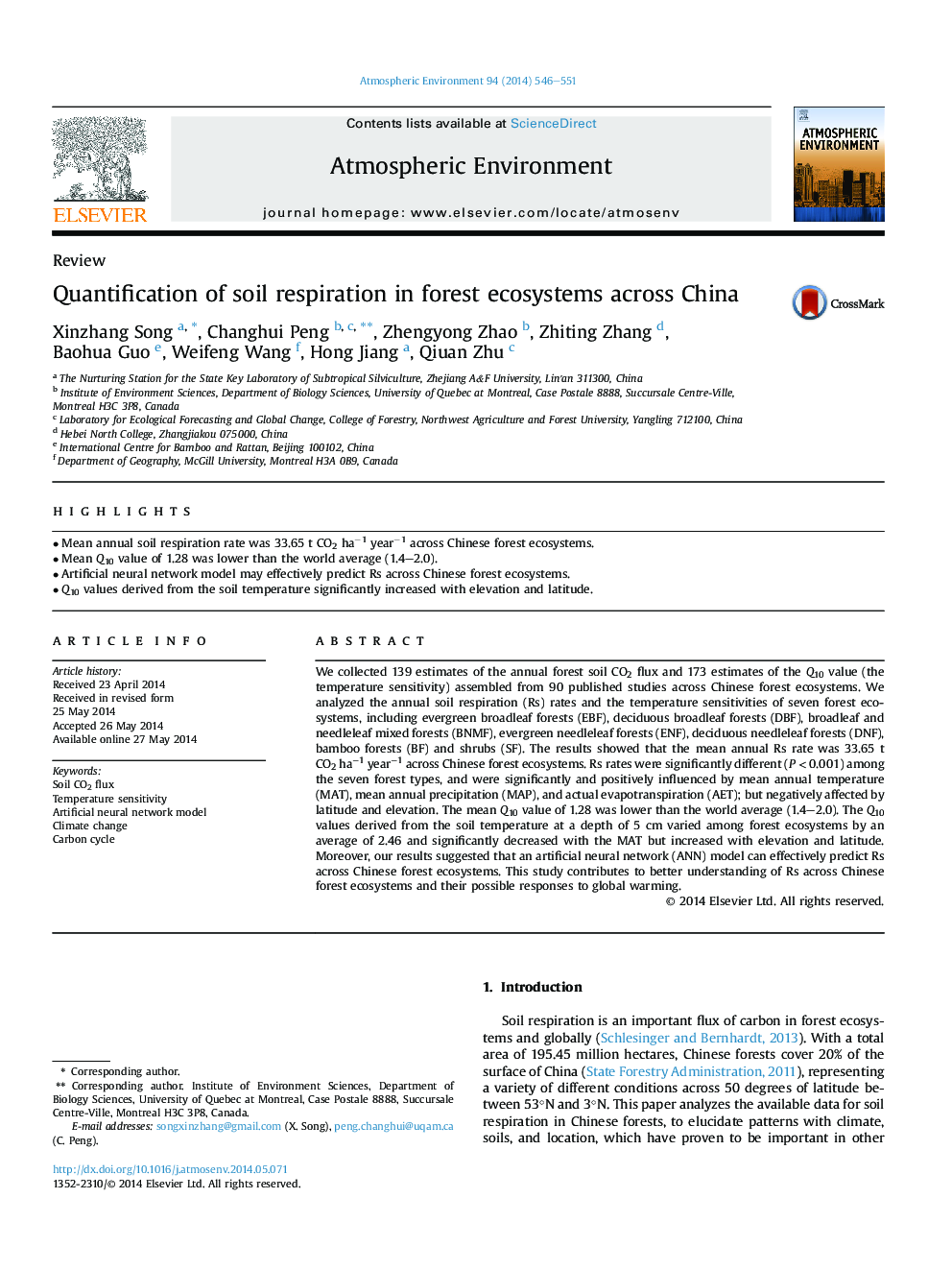| Article ID | Journal | Published Year | Pages | File Type |
|---|---|---|---|---|
| 6339504 | Atmospheric Environment | 2014 | 6 Pages |
Abstract
We collected 139 estimates of the annual forest soil CO2 flux and 173 estimates of the Q10 value (the temperature sensitivity) assembled from 90 published studies across Chinese forest ecosystems. We analyzed the annual soil respiration (Rs) rates and the temperature sensitivities of seven forest ecosystems, including evergreen broadleaf forests (EBF), deciduous broadleaf forests (DBF), broadleaf and needleleaf mixed forests (BNMF), evergreen needleleaf forests (ENF), deciduous needleleaf forests (DNF), bamboo forests (BF) and shrubs (SF). The results showed that the mean annual Rs rate was 33.65Â t CO2Â haâ1Â yearâ1 across Chinese forest ecosystems. Rs rates were significantly different (PÂ <Â 0.001) among the seven forest types, and were significantly and positively influenced by mean annual temperature (MAT), mean annual precipitation (MAP), and actual evapotranspiration (AET); but negatively affected by latitude and elevation. The mean Q10 value of 1.28 was lower than the world average (1.4-2.0). The Q10 values derived from the soil temperature at a depth of 5Â cm varied among forest ecosystems by an average of 2.46 and significantly decreased with the MAT but increased with elevation and latitude. Moreover, our results suggested that an artificial neural network (ANN) model can effectively predict Rs across Chinese forest ecosystems. This study contributes to better understanding of Rs across Chinese forest ecosystems and their possible responses to global warming.
Keywords
Related Topics
Physical Sciences and Engineering
Earth and Planetary Sciences
Atmospheric Science
Authors
Xinzhang Song, Changhui Peng, Zhengyong Zhao, Zhiting Zhang, Baohua Guo, Weifeng Wang, Hong Jiang, Qiuan Zhu,
